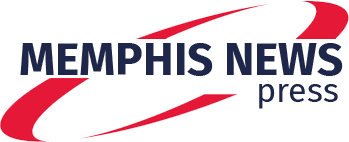Introduction to MDN HTTP Observatory
What is the MDN HTTP Observatory?
The MDN HTTP Observatory is a cutting-edge tool designed to enhance web security by providing detailed assessments of HTTP response headers. Developed by Mozilla, this tool is part of the broader MDN Web Docs ecosystem, which is renowned for its comprehensive documentation on web technologies. The Observatory evaluates a website’s HTTP headers and offers insights into potential vulnerabilities, security misconfigurations, and compliance with best practices.
The Need for Web Security Tools
In today’s digital landscape, web security is more critical than ever. With increasing cyber threats and sophisticated attacks, ensuring the security of web applications is paramount. Security tools like the MDN HTTP Observatory play a vital role in identifying and mitigating risks by analyzing web applications' security posture and providing actionable recommendations for improvement.
Goals of the Observatory
The primary goal of the MDN HTTP Observatory is to help web developers and administrators strengthen their web security by providing an easy-to-use platform for assessing HTTP response headers. By identifying potential security weaknesses and offering practical recommendations, the Observatory aims to improve the overall security of websites and protect them from common vulnerabilities.
Key Features of the MDN HTTP Observatory
Comprehensive Security Assessment
One of the standout features of the MDN HTTP Observatory is its ability to perform a thorough assessment of HTTP response headers. The tool evaluates various security headers, such as Content Security Policy (CSP), X-Content-Type-Options, X-Frame-Options, and others. It checks for the presence and correct configuration of these headers to ensure that web applications are protected against common attacks, such as clickjacking, cross-site scripting (XSS), and MIME type sniffing.
User-Friendly Interface
The Observatory is designed with user experience in mind. Its intuitive interface makes it easy for users of all skill levels to navigate and perform security scans. The tool provides clear instructions and visual feedback, ensuring that even those new to web security can effectively use it to assess and improve their websites’ security.
Detailed Reporting
After performing a security scan, the MDN HTTP Observatory generates detailed reports that highlight the findings and provide actionable insights. The reports include information on which security headers are missing or misconfigured, along with recommendations for improving their settings. This detailed feedback helps users understand the issues and take steps to address them effectively.
How the MDN HTTP Observatory Works
Running a Security Scan
Using the MDN HTTP Observatory is straightforward. Users simply enter the URL of the website they wish to assess into the tool’s interface and initiate a scan. The Observatory then analyzes the HTTP response headers of the specified URL and evaluates them against best practices for web security.
Interpreting the Results
Once the scan is complete, the Observatory presents the results in a user-friendly format. The results include a summary of the security headers present, their configuration status, and any potential issues detected. Users can review these findings to understand their website’s security posture and identify areas for improvement.
Actionable Recommendations
The Observatory provides specific recommendations for addressing any issues detected during the scan. These recommendations may include adding or updating security headers, configuring them correctly, or implementing additional security measures. By following these recommendations, users can enhance their website’s security and reduce the risk of vulnerabilities.
Comparing MDN HTTP Observatory with Other Security Tools
Feature Comparison
When compared to other web security tools, the MDN HTTP Observatory offers a unique focus on HTTP response headers. While many security tools provide a broader range of features, such as vulnerability scanning and penetration testing, the Observatory specializes in evaluating and improving HTTP header configurations. This specialized focus allows it to provide detailed insights and recommendations related to HTTP security.
Advantages and Disadvantages
The advantages of using the MDN HTTP Observatory include its ease of use, focused assessment of HTTP headers, and actionable recommendations. It is an excellent tool for developers looking to quickly assess and improve their web applications' security posture. However, its focus on HTTP headers means it may not cover other aspects of web security, such as server-side vulnerabilities or application logic flaws.
Use Case Scenarios
The MDN HTTP Observatory is particularly useful for web developers and administrators who want to ensure that their websites adhere to security best practices related to HTTP headers. It is ideal for scenarios where the primary goal is to assess and improve the configuration of security headers, rather than performing comprehensive security testing.
Integration with Existing Security Practices
Complementing Existing Tools
The MDN HTTP Observatory can be used alongside other security tools to create a comprehensive security strategy. While the Observatory focuses on HTTP headers, other tools may provide additional features, such as vulnerability scanning, threat detection, and security monitoring. By integrating the Observatory with these tools, users can achieve a more robust security posture.
Best Practices for Web Security
Incorporating the findings from the MDN HTTP Observatory into existing security practices is essential for achieving a well-rounded security strategy. Users should regularly perform security scans, address identified issues, and stay updated with the latest security best practices. Combining the Observatory’s recommendations with other security measures, such as regular updates and secure coding practices, will help enhance overall web security.
Case Studies
Organizations that have successfully integrated the MDN HTTP Observatory into their security workflows have reported improved security posture and reduced risk of vulnerabilities. For example, a company that regularly uses the Observatory to assess its web applications’ security headers may find and address issues before they can be exploited by attackers, leading to a more secure and resilient web presence.
Common Security Issues Identified by the Observatory
Common Vulnerabilities
The MDN HTTP Observatory frequently identifies common security vulnerabilities related to HTTP headers. These include missing or misconfigured headers, such as Content Security Policy (CSP) or X-Content-Type-Options, which can leave websites vulnerable to attacks like cross-site scripting (XSS) and clickjacking.
Impact of Common Issues
The impact of these vulnerabilities can be significant, potentially leading to security breaches, data theft, or unauthorized access. For example, a missing CSP header may allow attackers to inject malicious scripts into a website, while a misconfigured X-Frame-Options header could enable clickjacking attacks.
Fixing Common Problems
Addressing common security issues involves implementing the recommended security headers and configuring them correctly. For example, adding a strong CSP header can mitigate XSS attacks, while configuring the X-Frame-Options header can prevent clickjacking. The Observatory’s recommendations provide guidance on how to resolve these issues effectively.
Benefits of Using the MDN HTTP Observatory
Improving Security Posture
Using the MDN HTTP Observatory helps improve a website’s security posture by identifying and addressing vulnerabilities related to HTTP headers. By following the tool’s recommendations, users can strengthen their websites’ defenses and reduce the risk of security breaches.
Ease of Use
The Observatory’s user-friendly interface makes it accessible to users of all skill levels. Its straightforward design and clear instructions ensure that even those new to web security can effectively use the tool to assess and enhance their websites’ security.
Educational Value
In addition to its practical benefits, the MDN HTTP Observatory serves as an educational resource for web developers. By using the tool and reviewing its recommendations, developers can learn more about web security best practices and gain insights into improving their websites’ security configurations.
Getting Started with the MDN HTTP Observatory
Creating an Account
To get started with the MDN HTTP Observatory, users need to create an account on the MDN Web Docs website. This process is straightforward and involves providing basic information and agreeing to the terms of use.
Initial Setup and Configuration
Once registered, users can access the Observatory’s interface and configure it for their needs. This may involve specifying the websites to be assessed and setting any relevant preferences or options.
Performing Your First Scan
Running a security scan is easy with the MDN HTTP Observatory. Users simply enter the URL of the website they want to assess and initiate the scan. The tool will then analyze the HTTP response headers and provide detailed results and recommendations.
Future Developments and Updates
Upcoming Features
The MDN HTTP Observatory is expected to continue evolving with new features and enhancements. Future developments may include expanded assessments, improved reporting capabilities, and additional integrations with other security tools.
Roadmap for Development
The roadmap for the MDN HTTP Observatory includes plans for ongoing updates and improvements to ensure that the tool remains effective and relevant in the evolving landscape of web security. Users can stay informed about these developments through the MDN Web Docs website and related channels.
Community Involvement
Users are encouraged to contribute to the development and improvement of the MDN HTTP Observatory. This may involve providing feedback, reporting issues, or participating in discussions about future features and enhancements.
Recommendations
Summary of Key Points
The MDN HTTP Observatory is a valuable tool for enhancing web security by assessing and improving HTTP response headers. Its user-friendly interface, detailed reporting, and actionable recommendations make it an effective resource for web developers and administrators.
Final Recommendations
To make the most of the MDN HTTP Observatory, users should regularly perform security scans, address identified issues, and integrate the tool’s findings into their broader security practices. Combining the Observatory with other security tools and best practices will help ensure a robust and effective security strategy.
Next Steps
Web developers and administrators should start using the MDN HTTP Observatory to assess and improve their websites’ security. By leveraging the tool’s insights and recommendations, they can enhance their web security posture and stay ahead of potential threats.

.jpg)
.jpg)




.jpg)

 English (US) ·
English (US) ·